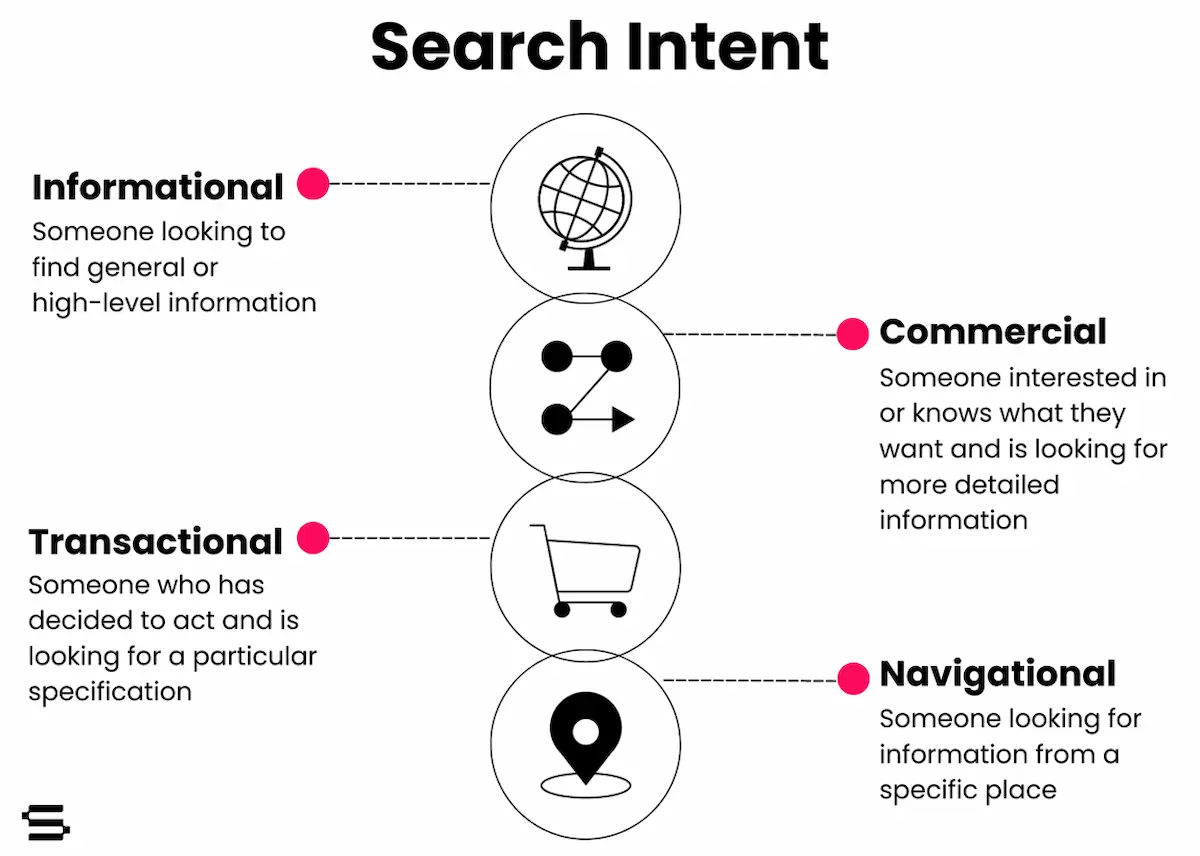I recently met with a group of Entrepreneurs to talk about digital marketing. Most of their companies are small, but these guys and gals were mighty impressive. At the time, the majority had driven the largest percentage of their sales through word of mouth alone. Like most business owners, they expressed the desire to continue educating potential customers about their brand, but felt like they could know more about their target audience. But these folks didn't have the time or access to premium tools to get crazy sophisticated when trying to understand who they are selling to online. They needed a quick and scrappy solution. So, I compiled a list of 16 FREE and easy to use tools for those Entrepreneurs to help them identify their audience and then connect with them online.
I had originally designed this post for those who don't have the time or budget to analyze their audience through premium tools. However, the real beauty of the tools outlined in this post is that they can add value to any company at any level or size or experience. At Seer, we use them every day. Below is how you can use them:
Why Focus on Audience First?
At Seer, we’re big proponents of understanding our clients' audiences before defining our marketing strategies. Marketing isn’t always linear, but we like to think about our clients’ audiences as a general first step, which eventually helps inform how we talk to them, what we should talk about, and how we should reach them. It’s not rocket science. Behind every computer or smartphone is a real person… the idea is to figure out who the heck they are before you start talking to them.

Why is this important?
At Seer, we think about Google’s algorithm and how it decides who’s at the top of search results
The user does.
Let me explain. The days of stuffing a bunch of target keywords into a page and hoping that it ranks well are long, long gone. Google has gotten way more sophisticated
As the algorithm continues to evolve, we’re firm believers that content that resonates the most with users will win more times than it does not. Given time, the best stuff on the internet for any given query will eventually rank on page one. Users will see it, engage with it, and search engines will take notice and want to rank it well. So, if we can build stuff and talk about stuff that resonates with our audience, we’ll earn those user signals that boost rankings, and ultimately traffic and revenue. As one of my favorite marketers of all time Seth Godin says,
“
Sure, SEO isn’t the be-all of marketing, but if you understand your audience, you can deliver personal and relevant messages no matter what channel you’re investing in.
A note about these tools:
Some of them do way more than what I’m outlining for the purposes of this post. If that’s the case, I gave it an asterisk. Asterisk = really important and/or
Tools to Identify Your Audience
Being able to find your customers, what they’re interested in, and how they search online is the first (and probably most crucial!) step to the whole digital marketing thing. Each of these tools can help you more effectively understand who your online customers actually are, what their path to purchase tends to look like, and how you should be talking to them throughout their journey.

Google Analytics*
What it is: Also known as “GA”, it’s the most widely used website analytics
Features: Google Analytics provides you with data on the actual visitors trafficking your site, and within the Audience section, you can play around with the below data sets over whatever time period you’re interested in:
- Demographics (Age, Gender)
- Geo (Language, Location)
- Behavior (New vs. Returning, Frequency & Recency, Engagement)
- Technology (Browser & OS, Network)
- Mobile (Devices)
- Interests (Affinity Categories, In-Market Segments)
-
... and more!
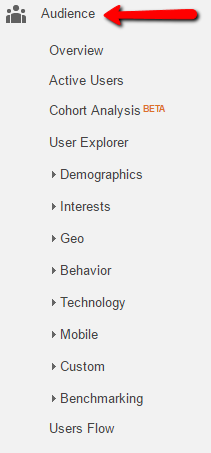
Seer Pro Tip: Interest
Real World Application: For one of my clients in the lifestyle industry that buys and sells used luxury watches, we discovered that potential customers lower in the conversion funnel are tangentially interested in sports. So, we created a “what watch does ___ wear” blog series, which highlights famous athletes and their watch collections. These posts have driven thousands of monthly site visitors since their creation, and over $25,000 worth of assisted conversions.
Think With Google: The Customer Journey To Online Purchase
What it is: By plugging in your industry, business size, and region, this tool will help you uncover the various marketing channels that your customers are likely to use (and in what order) throughout their path to purchase
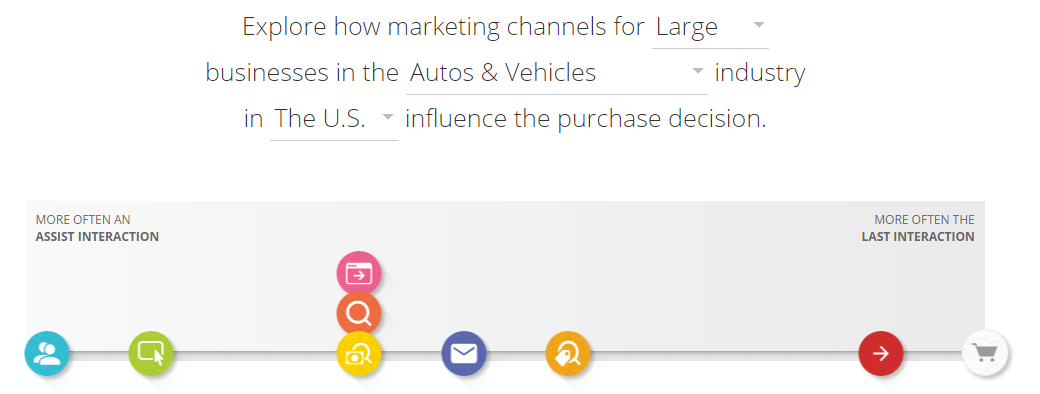
Features: Uncover how your various marketing campaigns may have a different impact on your customers, depending on where throughout their path to purchase they interact with your campaign. For example, at the beginning of the purchase path, Generic Paid Search helps customers gain awareness of your product or service. In the middle, it creates desire and boosts interest. And at the end, it helps to seal the deal. This tool will allow you to understand what percentage of users view Generic Paid Search (and other channels such as
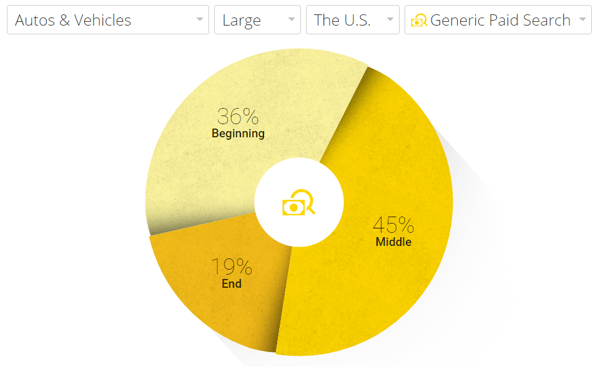
Seer Pro Tip: In Google Analytics under Acquisition -> Overview, you’ll see the percentage of total site visits over any given date via the various channels outlined in this tool. Layer that data over the path to purchase timeline of this tool (first screenshot) to understand if users are trafficking your website more towards the beginning, middle, or end of their path to purchase. For example, if the majority of your users
Followerwonk
What it is: Dig into Twitter analytics in order to uncover audience insights with this tool. Search bios, compare users, analyze Twitter accounts, track & sort followers, and much more.
Features: The free version allows you to view social authority rankings, see followers and their locations, and know when followers are active.
Seer Pro Tip: Under the search bios option, insert your Twitter handle and the handles of your closest competitors, and download the top 50 most relevant bio profiles for each. Throw those bios into a word cloud in order to understand the most frequently used words in your follower’s Twitter bios, in order of appearance. That will tell you what sorts of things your followers are interested in - outside of your site, of course.
Real World Application: By running through the above Seer Pro Tip process for one of my
Tools to Find Out What Your Audience Is Searching For
What’s better than knowing who your customers are and what they’re interested in? Knowing what they’re actually searching for online! By understanding what they’re searching for, you can create content and streamline your messaging so that you’re providing real value by answering your customers’ pain points and questions about your product or service.

Answer The Public
What it is: One of my favorite tools for keyword research. Plug in any keyword and understand what real life questions are being asked around it. This tool breaks up questions into who, what, when, where, why, which, are and how modifiers.
Features: This tool allows you to visualize each question in a handy image that can easily be exported for presentations. You can also view a master list of questions in alphabetical order, and export them for your own use. Looking to understand your international customers? Another helpful feature is the ability to toggle between countries, like the UK, France, and Australia.
Seer Pro Tip: Download the Keywords Everywhere chrome extension, a free keyword research tool that shows you google keyword search volume and cost per click data on multiple websites, including this one. With that extension, you can view keyword search volume without having to leave the tool!
Super Seer Pro Tip:
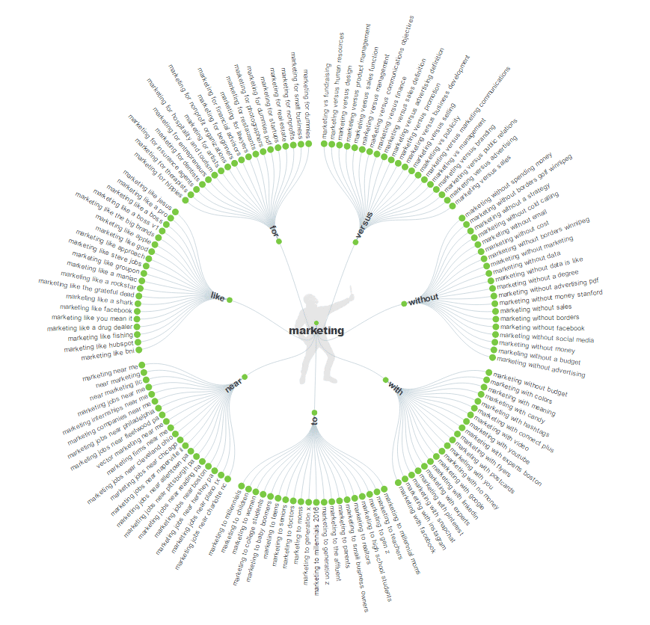
Keyword Tool
What it is: Keyword Tool is free online keyword research instrument that uses Google Autocomplete to generate hundreds of relevant long-tail keywords for any topic.
Features: You can also toggle between Google, YouTube, Bing, Amazon, and the App store, which is really nifty. The tool also allows you to change geographic location and language settings easily, which makes international keyword research a breeze.
Seer Pro Tip: Don’t get too “long tail” with your keywords here. Long tail keywords are those three and four keyword phrases which are very, very specific. We’ve found that this tool works best when you type in more popular (and shorter) keywords that tend to have
Google Keyword Planner*
What it is: At a high level, keyword Planner allows you to search for keyword ideas, get historical keyword statistics, see how a list of keywords might perform if you’re thinking about running a paid advertising campaign, and even create a new keyword list by multiplying several lists of keywords together.
Features: Use this tool to understand how many
Seer Pro Tip: Keyword Planner has started combining search volume for similar keywords, which means that you could be grossly overestimating aggregate search volume if you were to add up multiple keywords in a list. For
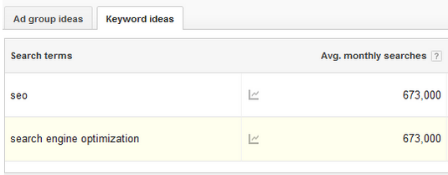
There are workarounds to get individual keyword data back - but be careful if you’re using Keyword Planner data to make big marketing decisions. Lastly, keep in mind that average monthly search volume isn’t everything. You may want to create content that targets keywords with lower search volume, but that may resonate better with audiences and have a higher
Google Trends
What it is: A Google tool that shows how often a particular search-term is entered relative to its total search-volume across various regions of the world, and in various languages.
Features: There are two main features - a graph showing search-term trends, and popularity
Seer Pro Tip: This is a great tool to help identify stories and topics that are currently trending. If a story relates to your product, service line, or industry as a whole, it can easily help inform social media or blog post content.
Talkwalker
Alerts
What it is: Heard of Google Alerts?
Features: Create alerts based off specific search queries, and filter by result types, language, and how often you’d like to receive them. Alerts will be sent directly to the email address of your choosing.
Seer Pro Tip: Set up these alerts
Real World Application: By running through the above Seer Pro Tip process for one of my
Tools To Measure Your Site’s Visitors
If you’re a marketer, understanding what your customers are searching for online is smart. Adopting a data driven approach to your marketing efforts based off your website’s data (and data of your competitors sites) can be the difference between your future campaign being a success, or it

SEMrush*
What it is: Quite possibly the most valuable tool at the fingertips of digital marketers today, SEMrush is a data goldmine, with tools for competitor analysis, keyword research, site auditing, advertising research and so much more. The downside? The free version doesn’t offer a tremendous amount - a $69.95 upgrade
Features: Even with the free version, you’ll be able to understand a substantial amount of valuable information, including an organic search domain overview of your site and of your competitors’ sites, which includes the number of keywords and backlinks for each site, as well as:
- Top organic and paid keywords
- Organic position distribution
- Main organic competitors
- Competitive positioning map
- Branded vs. non-branded search metrics
- Sample paid ads
- Top backlink anchors
- Top referring domains
You can also view the keyword rankings for any domain on a keyword by keyword basis, which is extremely helpful. And, if that wasn’t enough, this tool allows you to discover trends, ranking data, and much more for any individual keyword.
Seer Pro Tip: There are so many valuable analyses that you can run from the SEMrush dashboard, but one of my
Real World Application: By looking for gaps in keywords ranking for images between one of my clients in the retail industry and their competitors, we uncovered a huge opportunity to optimize our client’s images. Three months after doing so, our images were ranking for 6,556 new keywords. For the images that we were already ranking for, our average position had also increased.
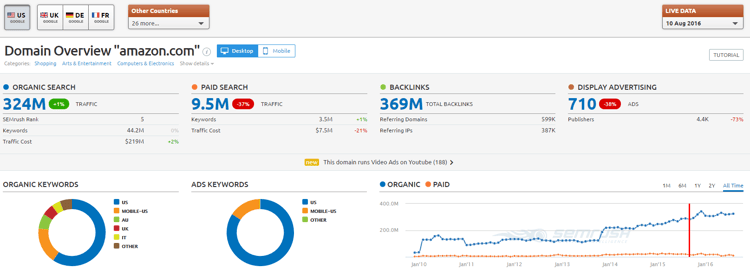
Google Search Console*
What it is: A tool to help you understand how Google understands your website; this free platform will provide you with the diagnostics needed to create and maintain Google-friendly websites and mobile apps. That’s all fine and dandy, but you can also leverage this data to understand how users from organic search are interacting with your website within the search engine results pages (SERPs), and how your website stands from a technical perspective.
Features: Discover how Google is indexing and crawling your website, and leverage technical data to better optimize your website for organic search. Under search traffic -> search analytics, you can see how many clicks and impressions each URL on your website is getting from Google. You can also view the click-through-rate and position of each one of those URLs. Within that report, filter by top performing pages, compare country and device data, and see how you’re performing when it comes to web, image, and video results.
Seer Pro Tip: You can now enable Google Search Console directly within Google Analytics, so that you don’t have to switch between tools. Who doesn’t like saving time? Enabling Search Console directly within Google Analytics will help marry landing page, country, device, and keyword data from both platforms, for added insights about your customers who are trafficking your website from organic search.
Real World Application: One of the fascinating aspects of the search analytics feature is being able to view the numerous keywords that each page is ranking for on Google. By understanding which keywords are driving the highest click-
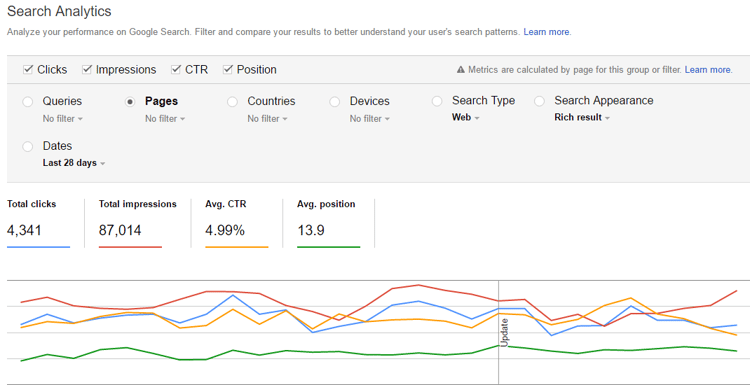
Tools to Help Reach Your Audience
on
Social Media
While Seer isn’t a social media agency, we get asked about social media best practices and tools a lot. Being able to reach your customers and make an impression on social media is a crucial

Keyhole
What it is: Track hashtags, social accounts, and historical social data across Twitter and Instagram with this tool. While the meat of what’s offered requires a paid plan to access, you can still squeeze out insightful data from the free version.
Features: Uncover trends and valuable social account statistics across any topic or industry, as well as source top posts by engagement by toggling between the hashtag and @account options. There’s also a nifty sentiment score, which analyzes whether or not social posts are positive, negative, or neutral around any given topic.
Seer Pro Tip: By understanding what your audience is talking about on social with this tool, you can use insights from Followerwonk around the times of day that your audience is most active on social media in order to not only post about relevant topics, but do it at the right time.
Real World Application: By analyzing hashtags using this tool, we realized that a topic within my client’s industry was being posted about a lot, and we had written a few old blog posts about that same topic. We re-
Share Tally
What it is: A quick and easy tool for tallying up how many times any URL on the internet has been shared across almost any social media platform or website that allows you to bookmark or share (
Features: The beauty of this tool is in its simplicity. Simply plug in a URL - and voila!
Seer Pro Tip: The “Tally It” bookmark is awesome! Featured on the homepage, you can drag the bookmarklet to your toolbar and easily tally up the shares of any page on the internet without having to leave that page and go back to the tool!

Hootsuite
What it is: One of my colleagues, Lauren Grabowski, wrote about this tool in her awesome Giant List of Free Influencer Marketing & PR Tools post, which I highly recommend checking out if you haven’t already. Her roundup was grade A, so I’m going to replicate it here.
Features: The free version offers a dashboard to manage up to 3 of your social media profiles where you can send messages and interact with industry
Seer Pro Tip: Track specific hashtags like #URGHARO and #JournoRequest or phrases like “for a story” to find journalists who are looking for quick sources.
All My Tweets
What it is: Also stolen from Lauren’s post! This is a simple, two-step process of finding email addresses using Twitter.
Features: Just sign in with your Twitter account, enter the Twitter handle you’d like to see tweets
Seer Pro Tip: This is a great tool to find emails for bloggers and freelancers if you want to get in touch. It’s also an innovative way to easily see if an
Canva
What it is: A unique tool that allows you to create beautiful designs with no design experience whatsoever. This is a must for smaller companies who want to take the DIY approach to designing their content. It’s even great for larger companies who want to beef up the aesthetics of their social media posts without forking over the big bucks. Think graphic design software for dummies.
Features: The tool includes millions of images, photo filters, free icons & shapes, and hundreds of fonts. There are templates for cards, invitations, flyers, posters, banners, social graphics, and much, much more. You can sign up for free, and start designing on their design grid.
Seer Pro Tip: Twitter cards have been proven to help drive engagement, but creating them can be costly if you don’t have access to an in-house designer. Use this tool to create well-designed Twitter cards and other engaging images that can be shared through social media.
Klear
What it is: Though Klear offers premium options, the free version is a gem. Find Influencers and analyze any social account across Twitter, Facebook and Instagram in a heartbeat.
Features: Segment Twitter and Instagram
Seer Pro Tip: You can easily “Control F” and search Twitter bios for additional information that may be relevant to a potential outreach or promotional campaign, like
Summary
There are so many tools out there for identifying and reaching your audience online. The free tools outlined in this post are:
Tools to Identify Your Audience
Tools to Find Out What Your Audience Is Searching For
Tools To Measure Your Site’s Visitors
Tools to Help Reach Your Audience
on
Social Media
What are your favorite tools for identifying and reaching your customers online? Got any that we should include on the list. Feel free to reach out on Twitter @ijordanfrank.


